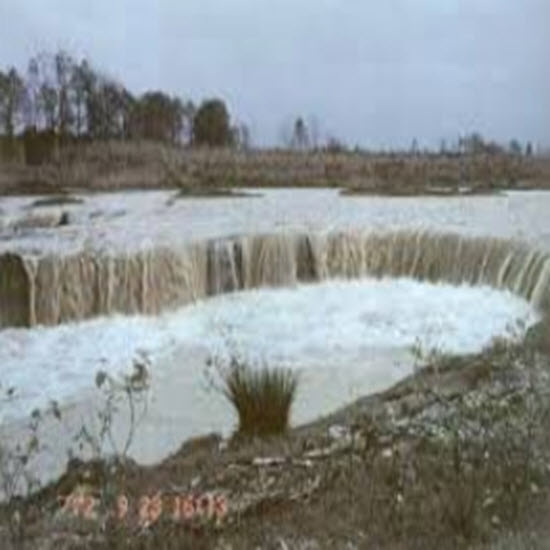آنالیز فرایند ازدیاد برداشت از منابع نفت با تزریق آب هوشمند
چکیده
در این مطالعه به تحلیل نمودار فشار جدایش در سطح کلی / آب/ نفت پرداخته شده است. روش های زیادی به منظور افزایش تولید نفت از مخازن هیدروکربوری تاکنون پیشنهاد شده است که بررسی کارکرد هر یک از این روش ها در واقع به اثر بخشی آن روش در جداکردن نفت از سطح سنگ و در نتیجه تولید بیشتر نفت بستگی دارد. جدا شدن نفت از سطح سنگ باعث میشود ترشوندگی ازحالت نفت-دوست به آب-دوست تغییر کند. در این تحقیق، تطابق آنالیز فشار جدایش و تولید نفت در روش تزریق آب هوشمند بر اساس اطلاعات تحقیق ( 1) مورد تجزیه و تحلیل قرار گرفته است. نتایج نشان میدهد که نمودار فشار جدایش کاملا مطابق با داده های آزمایشگاهی می باشد. یافته های ما تایید می کند که یون های یک بار مثبت باعث ایجاد فشار جدایش بیشتر نسبت به یون های دو بار مثبت می شوند. همچنین آنالیز ضخامت فیلم مایع باقی مانده بر روی سطح سنگ در تزریق NaCl بیشتر از (CaCl(2), MgCl (2 است که نشان دهنده آب دوست تر شدن سطح سنگ است.
مقدمه
استفاده از آب هوشمند به منظور ازدياد برداشت از مخازن نفتی در دهه اخیر به علت ارزان و دوست دار محیط زيست بودن، بسیار مورد توجه قرار گرفته است. آب هوشمند با تغییر میزان شوری و تغییر در يون های آب بدست میآيد که نتايج تحقیقات نشان داده که یتواند باعث تغییر ترشوندگی سنگ های ماسه سنگی و کربناته به سمت آب دوستی شود. مکانیزم ای متعددی برای توضیح علت افزايش تولید نفت در تزريق آب هوشمند تا کنون پیشنهاد شده است که انبساط لايه دوگانه ، حرکت ذرات ريز ، افزايش پی اچ و ظرفیت تبادل الکترونی از مهمترين اين عوامل هستند. اوستاد و همکاران بیان کردند که يون های دوبار مثبت درون آب همزاد ،همانند پل باعث ارتباط گروه کربوکسیلیک نفت و سطح سنگ، که هردو دارای بار منفی هستند، میشود. همچنین گاير و همکاران افزايش پی اچ آب هوشمند در تماس با سطح Clayرا عامل غالب در تولید بیشتر نفت در مخاز ماسه سنگین مطرح کردند. شهاتا و ناصر ال دين با تغییر میزان شوری و يون های آب همزاد نتیجه گرفتند که هر چه میزان شوری و يون های چند بار مثبت بیشتر باشد، آب هوشمند عملکرد بهتری خواهد داشت. گارسیا و همکاران با بررسی خواص نفت دريافتند که میزان عدد اسید به عنوان معیاری برای نشان دادن میزان ترکیبات قطبی درون نفت، هر چه بیشتر باشد، آب هوشمند اثربخشی بیشتری وخواهد داشت.
ABSTRACT
In this study, we analyzed the separation pressure diagram of the total level / water / oil. Many methods have been proposed to increase the production of hydrocarbon reservoirs so far that the study of the functioning of each of these methods actually depends on the effectiveness of this method in separating the oil from the surface of the rock and thus the production of more oil. The separation of oil from the surface of the stone causes the wetting of the oil-friend’s condition to change into a water-loving one. In this research, the analysis of separation pressure and oil production analysis in the method of intelligent water injection has been analyzed based on research data (1). The results show that the separation pressure diagram is completely in line with the laboratory data. Our findings confirm that positive-charge ions produce higher separation pressures than two-fold positive ions. Also, the analysis of the thickness of the residual liquid film on the surface of the rock in the NaCl injection is greater than (CaCl (2), MgCl 2), which indicates that the surface of the stone is softening.
INTRODUCTION
The use of smart water in order to increase the recovery of oil reservoirs in the last decade due to cheap and environmentally friendly is very much taken into consideration. Intelligent water is obtained by varying the amount of salinity and changes in water ions, which the results of the research have shown that it can change the wettability of sandstone and carbonate rocks to water-friendliness. Several mechanisms have been proposed to explain the cause of increased oil production in intelligent water injection. It has been suggested that dual layer expansion, fine particle movement, pH increase, and electron exchange capacity are among the most important factors. Oestad and colleagues have argued that double positive ions in dipping water, like Paul, cause the relationship between the carboxylic group of oil and the rock surface, both of which have a negative charge. Gayer et al. Also suggested that increasing the pH of water in contact with the Clay surface was the dominant factor in producing more oil in heavy sand gravel. Sha’atha and Nasser El-Din, by changing the amount of salinity and double-water ions, concluded that the higher the salinity and the more positive ions, the better the intelligent water would be. Garcia et al. Discovered that the amount of acid, as a measure of the amount of polar compounds in the oil, was more effective, the more intelligent the water would be.
Year: 2017
Publisher : Fourth International Conference on Recent Innovations in Chemistry and Chemical Engineering
By : Armin Gharari, Mohammad Jami Allahmadi, Bahram Soltani Sulgani, Abbas Zaini Jahromi
File Information: Persian Language/ 9 Page / size: 914 KB
سال : 1396
ناشر : چهارمین کنفرانس بین المللی نوآوری های اخیر در شیمی و مهندسی شیمی
کاری از : آرمین بازیاری ، محمد جامی الاحمدی ، بهرام سلطانی سولگانی ،عباس زینی جهرمی
اطلاعات فایل : زبان فارسی / 9 صفحه / حجم : KB 914


![آنالیز فرایند ازدیاد برداشت از منابع نفت با تزریق آب هوشمند[taliem.ir]](https://taliem.ir/wp-content/uploads/آنالیز-فرایند-ازدیاد-برداشت-از-منابع-نفت-با-تزریق-آب-هوشمندtaliem.ir_-1.jpg)
![اثر غنی سازی گاز بر حداقل فشار امتزاجی[taliem.ir] اثر غنی سازی گاز بر حداقل فشار امتزاجی[taliem.ir]](https://taliem.ir/wp-content/uploads/اثر-غنی-سازی-گاز-بر-حداقل-فشار-امتزاجیtaliem.ir_.jpg)
![آنالیز فرایند ازدیاد برداشت از منابع نفت با تزریق آب هوشمند[taliem.ir] آنالیز فرایند ازدیاد برداشت از منابع نفت با تزریق آب هوشمند[taliem.ir]](https://taliem.ir/wp-content/uploads/آنالیز-فرایند-ازدیاد-برداشت-از-منابع-نفت-با-تزریق-آب-هوشمندtaliem.ir_.jpg)


![Application of the stage gate model in production supporting quality[taliem.ir]](https://taliem.ir/wp-content/uploads/Application-of-the-stage-gate-model-in-production-supporting-qualitytaliem.ir_-150x150.jpg)
دیدگاه خود را ثبت کنید
تمایل دارید در گفتگو شرکت کنید؟نظری بدهید!